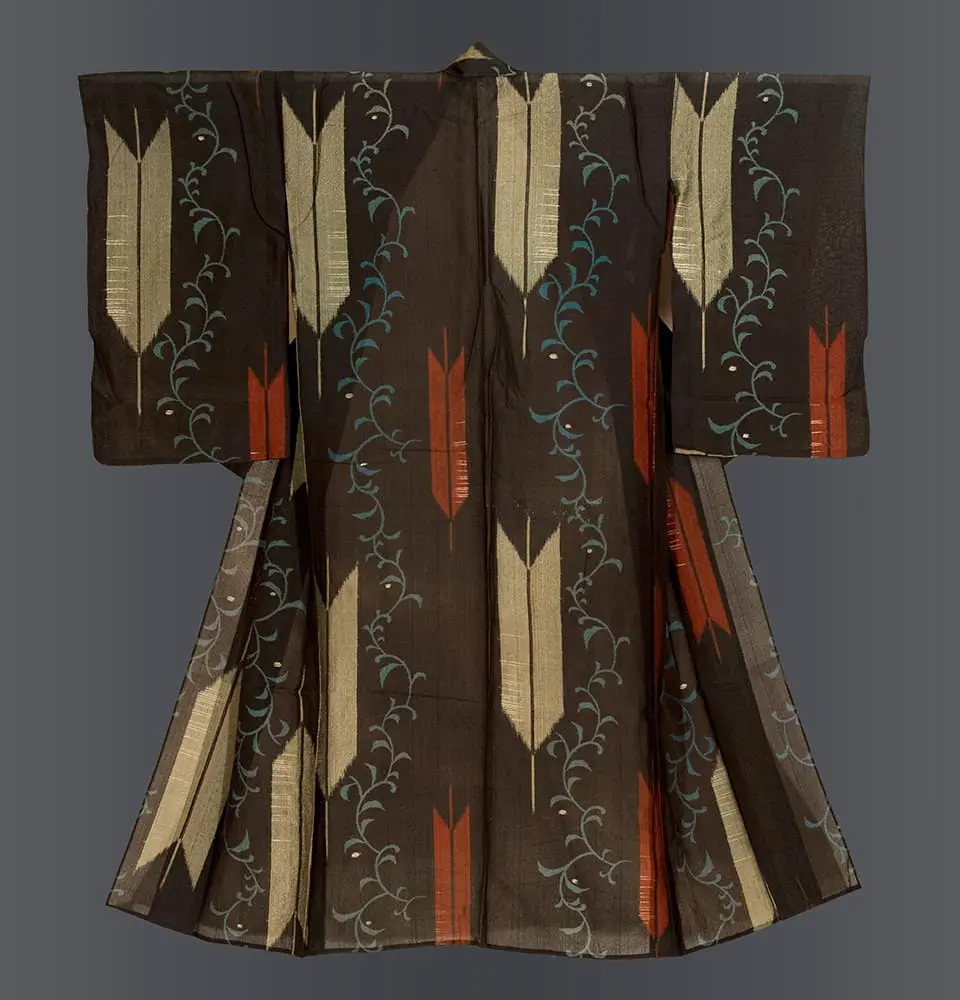This meisen-omeshi hitoe kimono features the classic yabane (arrow-feather) motif, rendered in bold vertical stripes that create a dynamic geometric pattern across the rich dark brown ground. The arrow-feather design carries deep cultural significance in Japanese tradition, symbolizing protection from evil, the ability to ward off misfortune, and the hope that troubles will pass by swiftly like arrows in flight. This motif was particularly popular in the early 20th century as Japan navigated rapid modernization while seeking to maintain cultural identity.
The textile technique employed here reflects the innovative meisen weaving process, which allowed for more affordable production of complex ikat-like patterns using rayon fibers. The omeshi refers to the distinctive textured surface created through a specific weaving technique that produces subtle ridges and valleys in the fabric. The interplay between the geometric arrow motifs and flowing turquoise vine-like elements (karakusa) demonstrates the period's embrace of both Art Deco-influenced linear design and traditional organic patterns. The painted metallic gold and silver highlights add luminous accents that catch light and create visual movement across the surface.
As an unlined summer garment (hitoe), this kimono showcases the Japanese aesthetic principle of seasonal appropriateness while the bold color palette of deep browns, vibrant oranges, and metallic accents reflects the increasingly cosmopolitan taste of urban Japanese society during this transformative period. The overall design embodies the iki aesthetic—a sophisticated urban chic that balances restraint with bold visual impact, representing the modern Japanese woman's desire to honor tradition while embracing contemporary style.
It has a slightly worn area in the mid-back resulting in a few tiny holes. Measuring 50 inches (127 cm) from sleeve-end to sleeve-end and standing at 57 inches (145 cm) in height.
This artwork is featured on page 271 of Art Kimono: Aesthetic Revelations of Japan, 1905-1960. This book, published by Yorke Antique Textiles, can be previewed or purchased on our website here.
.avif)













